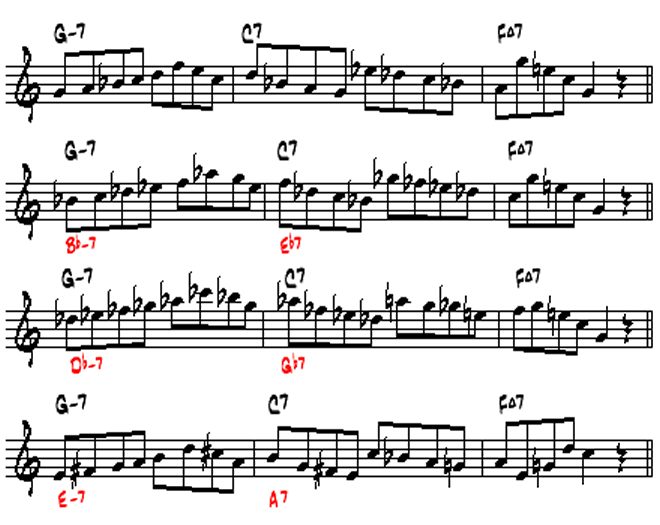Lesson Eight • Reharmonizing with ii-7 V7s from the Diminished Scale
Previously, we isolated four minor tetrachords found within the Diminished Scale. This lesson uses this material to give you a lot of stuff to play over ii-7 V7 IMa7 progressions.
First, a quick review: The four dominant 7th arpeggios found within the Diminished Scale are C7, Eb7, Gb7 and A7 (Lesson 06). The four minor tetrachords found in this scale are G-, Bb-, Db- and E-. If we pair off these arpeggios and tetrachords we get: G-7 C7, Bb-7 Eb7, Db-7 Gb7 and E-7 A7— four different ii-7 V7 combinations from one scale.
These ii-7 V7s (with notes not necessarily limited to the Diminished Scale) can be used to create alternative melodic paths over a basic ii-7 V7 IMa7 progression, in this case, in the key of F. The chord progression is on top of the staff, the substitute changes below.

This is just the same line transposed up in minor thirds to fit the appropriate substitute chords. The notes that fall outside of the basic chord sound create tension and interest, but notice that in each phrase, resolution to the F Major7 chord still takes place by either a half step or whole step to a chord tone. This resolution is what makes the substitute ii-7 V7s work. Otherwise they would sound aimless or disconnected (or just plain lame). Try this technique with some other ii-7 V7 phrases.
A similar concept is explored in greater detail in my book Jazz Guitar Structures, available from Mel Bay.